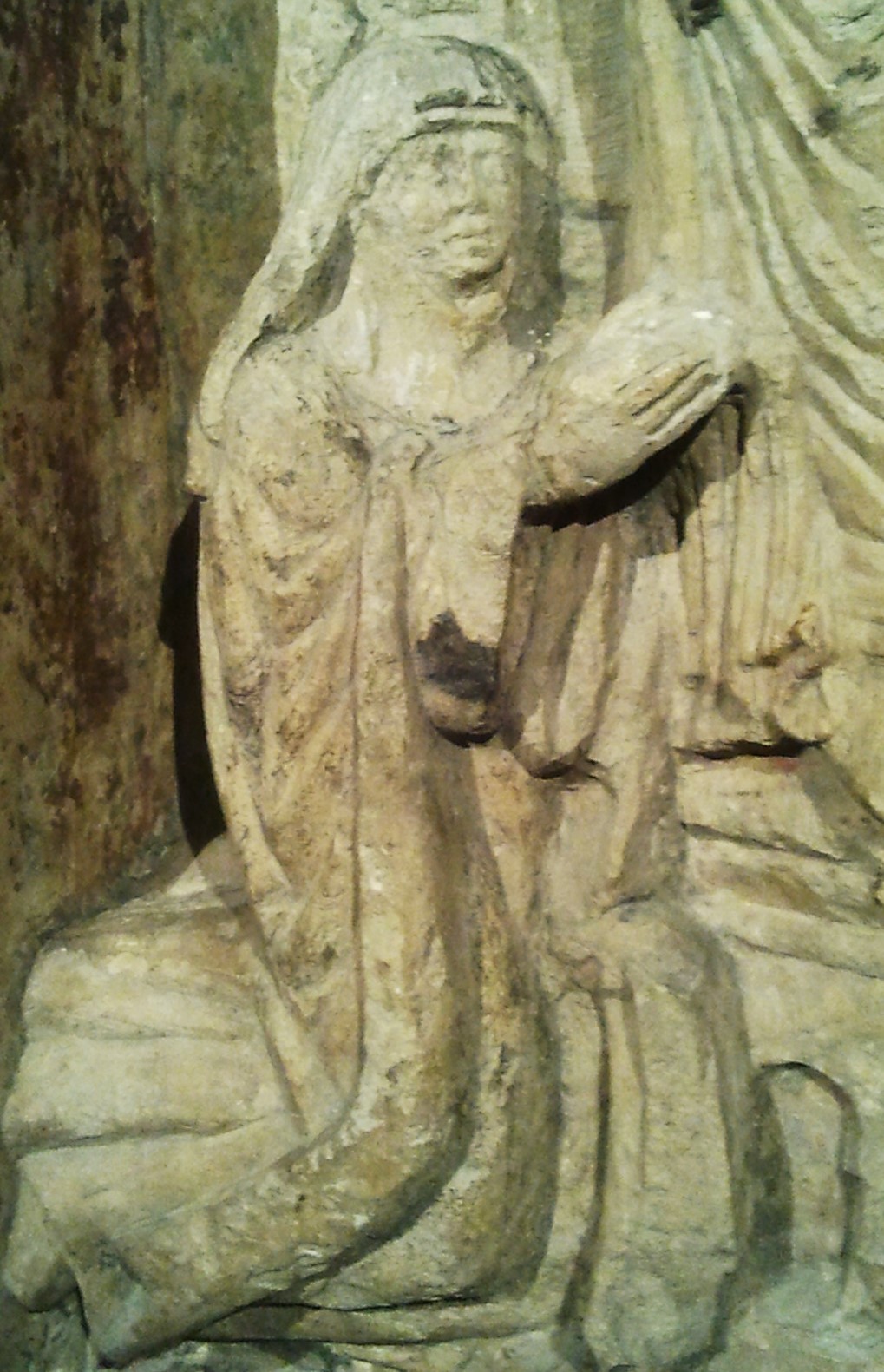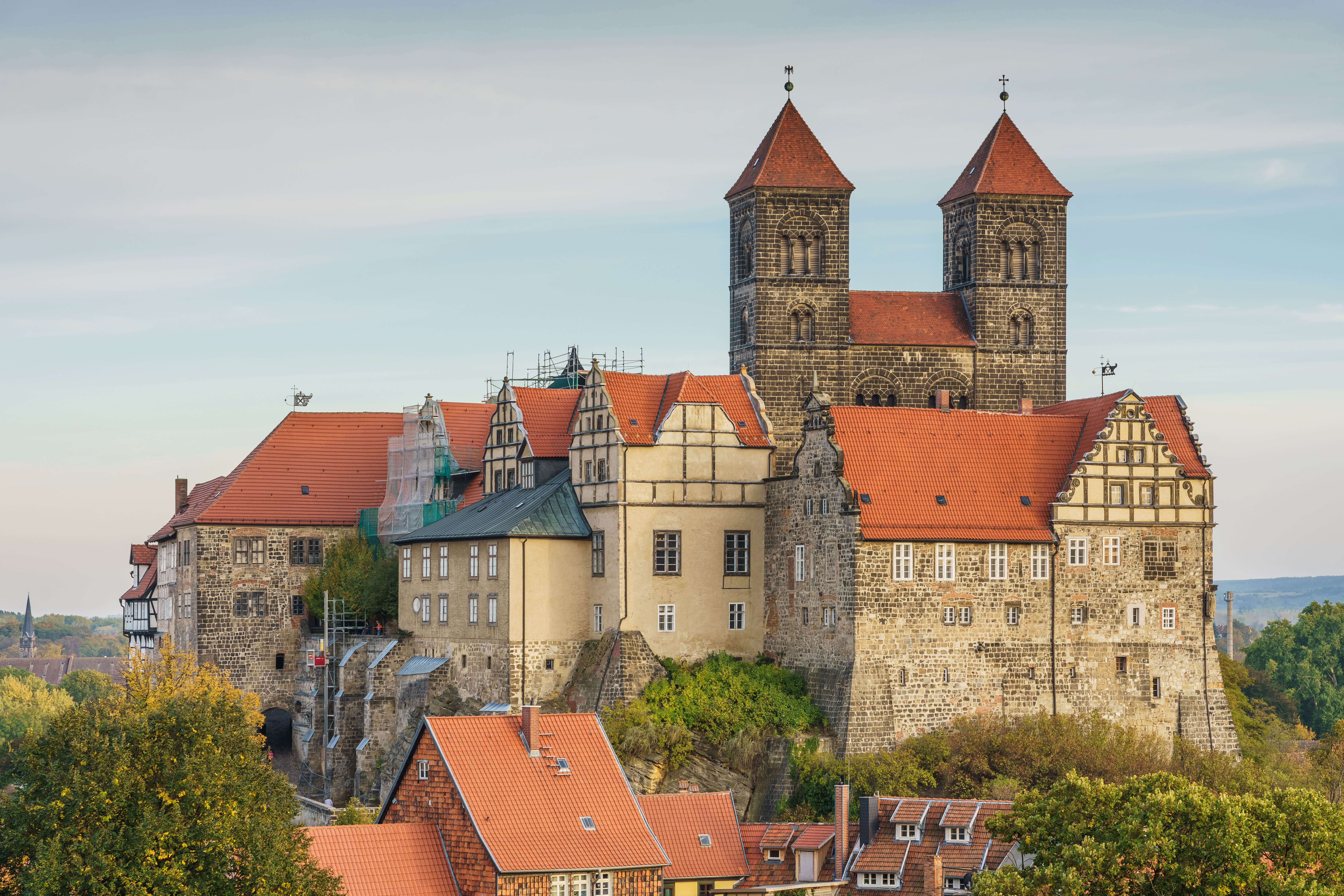|
Mlada (abbess)
Mlada was a Benedictine abbess and founder of the first monastery in Bohemia. In 965, she undertook a diplomatic trip to Rome to advocate the formation of the Diocese of Prague. Life Mlada was the youngest daughter of the Bohemian prince Boleslav I. The 12th-century ''Chronica Boemorum'' by Cosmas of Prague describes her as an educated woman; she studied Latin and was destined for a clerical career. In the years 965 to 969, she was sent by her father to Rome to meet with Pope John XIII and request permission for the establishment of a separate diocese for Bohemia and Moravia. The negotiations were difficult. Bohemia was part of the Diocese of Regensburg and Bishop Michael refused to forego the revenue from Czech churches during his lifetime (he died on 23 September 972). The approval for the breakup of the diocese was only granted by his successor, Wolfgang of Regensburg. Mlada left Rome in the winter of 972 and returned to Prague. The ecclesiastical permission was followed by s ... [...More Info...] [...Related Items...] OR: [Wikipedia] [Google] [Baidu] |
Quedlinburg
Quedlinburg () is a town situated just north of the Harz mountains, in the Harz (district), district of Harz in the west of Saxony-Anhalt, Germany. As an influential and prosperous trading centre during the early Middle Ages, Quedlinburg became a center of influence under the Ottonian dynasty in the 10th and 11th centuries. The castle, church and old town with around 2,100 Timber framing, timber houses, dating from this time of influence, were added to the UNESCO World Heritage Site, World Heritage List in 1994 because of their exceptional preservation and outstanding Romanesque architecture. Quedlinburg has a population of more than 24,000. The town was the capital of the Quedlinburg (district), district of Quedlinburg until 2007, when the district was dissolved. Several locations in the town are designated stops along a scenic holiday route, the Romanesque Road. History The town of Quedlinburg is known to have existed since at least the early 9th century, when there was a ... [...More Info...] [...Related Items...] OR: [Wikipedia] [Google] [Baidu] |
10th-century Births
1 (one, unit, unity) is a number, numeral, and glyph. It is the first and smallest positive integer of the infinite sequence of natural numbers. This fundamental property has led to its unique uses in other fields, ranging from science to sports, where it commonly denotes the first, leading, or top thing in a group. 1 is the unit of counting or measurement, a determiner for singular nouns, and a gender-neutral pronoun. Historically, the representation of 1 evolved from ancient Sumerian and Babylonian symbols to the modern Arabic numeral. In mathematics, 1 is the multiplicative identity, meaning that any number multiplied by 1 equals the same number. 1 is by convention not considered a prime number. In digital technology, 1 represents the "on" state in binary code, the foundation of computing. Philosophically, 1 symbolizes the ultimate reality or source of existence in various traditions. In mathematics The number 1 is the first natural number after 0. Each natural numbe ... [...More Info...] [...Related Items...] OR: [Wikipedia] [Google] [Baidu] |
Přemyslid Dynasty
The Přemyslid dynasty or House of Přemysl (, , ) was a Bohemian royal dynasty that reigned in the Duchy of Bohemia and later Kingdom of Bohemia and Margraviate of Moravia (9th century–1306), as well as in parts of Poland (including Silesia), Hungary and Austria. Origin and rise The dynasty's origin dates back to the 9th century, when the Přemyslids ruled a tiny territory around Prague, populated by a tribe of the Western Slavs. Their name comes from the mythical ancestor figure of Přemysl the Ploughman. Gradually they expanded, conquering much of the region of Bohemia, located in the Bohemian basin where it was not threatened by the expansion of the Frankish Empire. The first historically-documented Přemyslid duke was Bořivoj I (867). DNA testing on the remains of his son, Spytihněv I, reveal the family's Y-haplogroup to be R1b, second most common haplogroup in Czech republic. In the following century, the Přemyslids also ruled over Silesia and founded the ci ... [...More Info...] [...Related Items...] OR: [Wikipedia] [Google] [Baidu] |
Benedictine Abbesses
The Benedictines, officially the Order of Saint Benedict (, abbreviated as O.S.B. or OSB), are a mainly contemplative monastic order of the Catholic Church for men and for women who follow the Rule of Saint Benedict. Initiated in 529, they are the oldest of all the religious orders in the Latin Church. The male religious are also sometimes called the Black Monks, especially in English speaking countries, after the colour of their habits, although some, like the ..., although some, like the Olivetans, wear white. They were founded by Benedict of Nursia">Olivetans">..., although some, like the Olivetans, wear white. They were founded by Benedict of Nursia, a 6th-century Italian monk who laid the foundations of Benedictine monasticism through the formulation of his Rule. Benedict's sister, Scholastica, possibly his twin, also became a religious from an early age, but chose to live as a hermit. They retained a close relationship until her death. Despite being called an order, th ... [...More Info...] [...Related Items...] OR: [Wikipedia] [Google] [Baidu] |
Benedictine Nuns
The Benedictines, officially the Order of Saint Benedict (, abbreviated as O.S.B. or OSB), are a mainly contemplative monastic order of the Catholic Church for men and for women who follow the Rule of Saint Benedict. Initiated in 529, they are the oldest of all the religious orders in the Latin Church. The male religious are also sometimes called the Black Monks, especially in English speaking countries, after the colour of their habits, although some, like the ..., although some, like the Olivetans, wear white. They were founded by Benedict of Nursia">Olivetans">..., although some, like the Olivetans, wear white. They were founded by Benedict of Nursia, a 6th-century Italian monk who laid the foundations of Benedictine monasticism through the formulation of his Rule. Benedict's sister, Scholastica, possibly his twin, also became a religious from an early age, but chose to live as a hermit. They retained a close relationship until her death. Despite being called an order, t ... [...More Info...] [...Related Items...] OR: [Wikipedia] [Google] [Baidu] |
Beatification
Beatification (from Latin , "blessed" and , "to make") is a recognition accorded by the Catholic Church of a deceased person's entrance into Heaven and capacity to intercede on behalf of individuals who pray in their name. ''Beati'' is the plural form, referring to those who have undergone the process of beatification; they possess the title of "Blessed" () (abbreviation "Bl.") before their names and are often referred to in English as "a Blessed" or, plurally, "Blesseds". It is the third stage of the ordinary process of Canonization#Since 1983, official recognitions for Catholic saints: Servant of God, Venerable#Catholic, Venerable, Blessed, and Saint. History Local Bishops in the Catholic Church, bishops had the power of beatifying until 1634, when Pope Urban VIII, in the apostolic constitution ''Cœlestis Jerusalem'' of 6 July, reserved the power of beatifying to the Holy See. Since the reforms of 1983, as a rule, (for non-martyred Venerables) one Miracle, miracle must ... [...More Info...] [...Related Items...] OR: [Wikipedia] [Google] [Baidu] |
Saint
In Christianity, Christian belief, a saint is a person who is recognized as having an exceptional degree of sanctification in Christianity, holiness, imitation of God, likeness, or closeness to God in Christianity, God. However, the use of the term ''saint'' depends on the context and Christian denomination, denomination. In Anglican Communion, Anglican, Oriental Orthodox, and Lutheranism, Lutheran doctrine, all of their faithful deceased in Heaven are considered to be saints, but a selected few are considered worthy of greater honor or emulation. Official Ecclesiastical polity, ecclesiastical recognition, and veneration, is conferred on some denominational saints through the process of canonization in the Catholic Church or glorification in the Eastern Orthodox Church after their approval. In many Protestant denominations, and following from Pauline usage, ''saint'' refers broadly to any holy Christian, without special recognition or selection. While the English word ''saint'' ... [...More Info...] [...Related Items...] OR: [Wikipedia] [Google] [Baidu] |
Jesuits
The Society of Jesus (; abbreviation: S.J. or SJ), also known as the Jesuit Order or the Jesuits ( ; ), is a religious order (Catholic), religious order of clerics regular of pontifical right for men in the Catholic Church headquartered in Rome. It was founded in 1540 by Ignatius of Loyola and six companions, with the approval of Pope Paul III. The Society of Jesus is the largest religious order in the Catholic Church and has played significant role in education, charity, humanitarian acts and global policies. The Society of Jesus is engaged in evangelization and apostolic ministry in 112 countries. Jesuits work in education, research, and cultural pursuits. They also conduct retreats, minister in hospitals and parishes, sponsor direct social and humanitarian works, and promote Ecumenism, ecumenical dialogue. The Society of Jesus is consecrated under the patron saint, patronage of Madonna della Strada, a title of the Blessed Virgin Mary, and it is led by a Superior General of ... [...More Info...] [...Related Items...] OR: [Wikipedia] [Google] [Baidu] |
Catholic Religious Order
In the Catholic Church, a religious order is a community of consecrated life with members that profess solemn vows. They are classed as a type of Religious institute (Catholic), religious institute. Subcategories of religious orders are: * canons regular (canons and canonesses regular who recite the Liturgy of the Hours, Divine Office and serve a church and perhaps a parish); * clerics regular (priests who take religious vows and have an active apostolic life); * Mendicant orders, mendicants (friars and religious sisters, possibly living and working in a friary or a convent, who live from alms, recite the Divine Office, and, in the case of the men, participate in apostolic activities); and * Christian monasticism#Roman Catholicism, monastics (monks and nuns living and working in a monastery or a nunnery and reciting the Liturgy of the Hours, Divine Office). Catholic religious orders began as early as the 500s, with the Order of Saint Benedict being formed in 529. The earliest o ... [...More Info...] [...Related Items...] OR: [Wikipedia] [Google] [Baidu] |
Prague Castle
Prague Castle (; ) is a castle complex in Prague, Czech Republic serving as the official residence and workplace of the president of the Czech Republic. Built in the 9th century, the castle has long served as the seat of power for List of rulers of Bohemia, kings of Bohemia, Holy Roman Empire, Holy Roman emperors, and List of Presidents of Czechoslovakia, presidents of Czechoslovakia. As such, the term "Prague Castle" or simply the "Castle" or "the Hrad (politics), ''Hrad''" are often used as metonymy for the president and his staff and advisors. The Bohemian Crown Jewels are kept within a hidden room inside it. According to the ''Guinness Book of Records'', Prague Castle is the largest ancient castle in the world, occupying an area of almost , at about in length and an average of about wide. The castle is among the most visited tourist attractions in Prague, attracting over 1.8 million visitors annually. History Přemyslid fort The history of the castle began in 870 when it ... [...More Info...] [...Related Items...] OR: [Wikipedia] [Google] [Baidu] |







